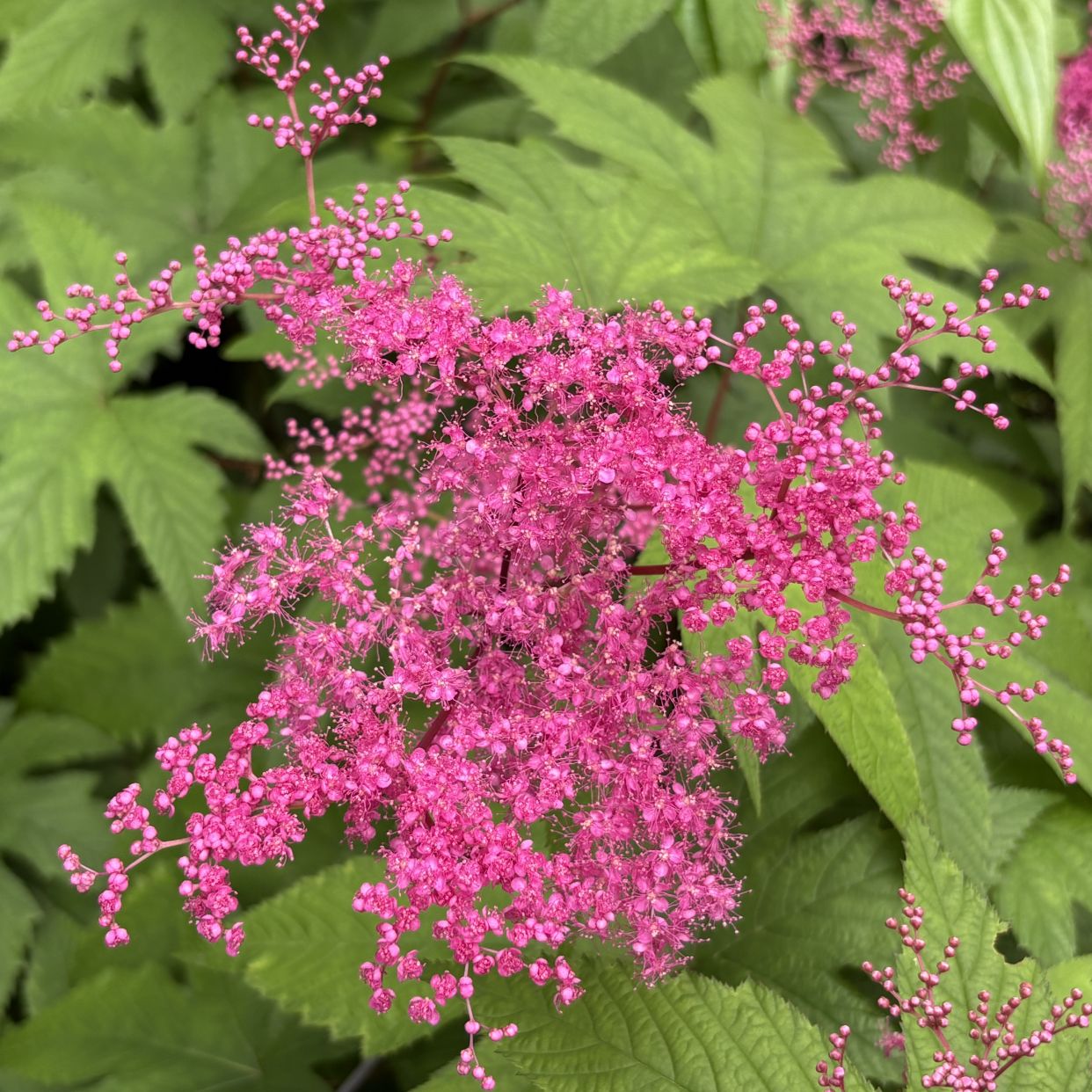キョウガノコは近縁の園芸交配種。古くから庭に植えられ、茶花などに用いられました。鮮緑色の瑞々しい掌状葉、鮮紅色の可憐な集散花序。
Japanese Meadowsweet is a horticultural hybrid. It has been planted in gardens since ancient times and used as a tea ceremony flower. It has bright green palmate leaves and pretty bright red cymes.
【仮名】キョウガノコ, キョウカノコ
【和名】京鹿の子
【英名】Japanese Meadowsweet
【学名】Filipendula purpurea
【誕生】06/ 09
【開花】05, 06, 07月
【花色】Pink, Purple
キョウガノコ
キョウガノコの概要
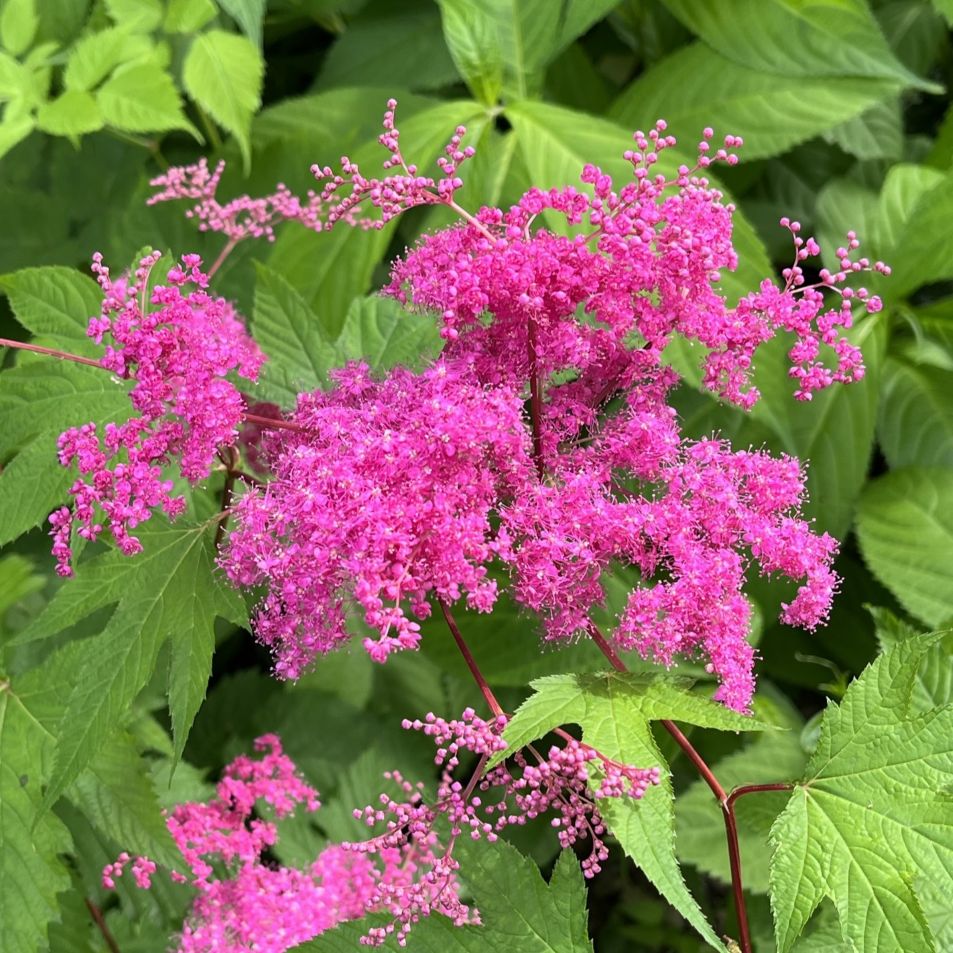
キョウガノコはバラ科の多年草です。本州の関東~九州に自生する「下野草」、山形県~富山県に自生する「越路下野草」の園芸交配種。古くから庭に植えられ、茶花などに用いられました。鮮緑色の瑞々しい掌状葉、鮮紅色の可憐な集散花序。「密かな恋」という花言葉があります。
キョウガノコの名前
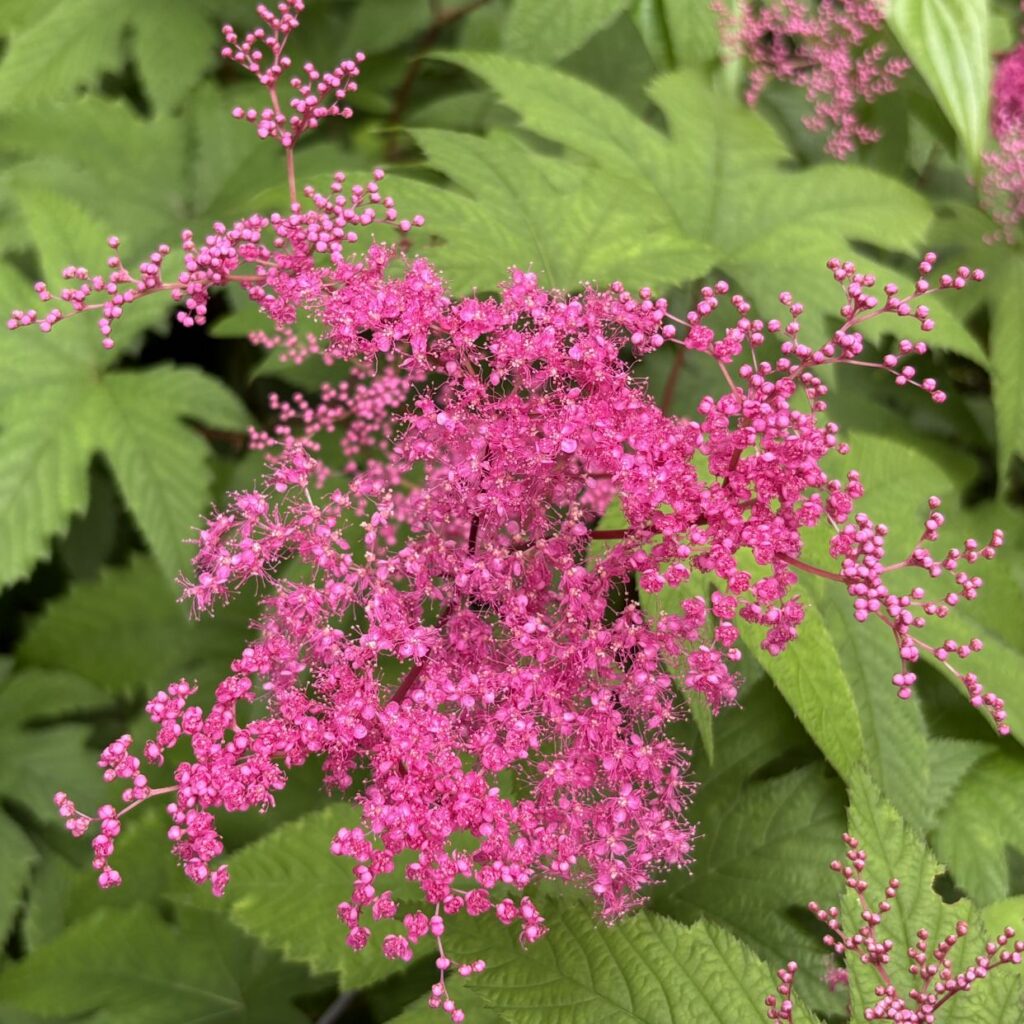
キョウガノコの名前は京都の伝統工芸「鹿の子絞り」に由来。小花の密集する花の咲き方が、絞り染めによる小さな桃色の斑点模様を思わせるからです。ラテン語の属名フィリペンデュラは「糸で吊り下がる」、種小名プルプレアは「赤紫色の」という意味。根茎の形状に由来します。
キョウガノコの姿形

キョウガノコの根茎は太く、数珠状に連なります。茎は上方で盛んに分岐。赤紫色で細く、稜があります。葉は奇数羽状複葉で互生。掌状に5~7裂し、縁に鋸歯があります。花は淡紅色の小蕾、鮮紅色の小花が密集。小花は花弁が4~5枚、雄しべが突き出ます。花後は痩果が直立。
キョウガノコの近縁
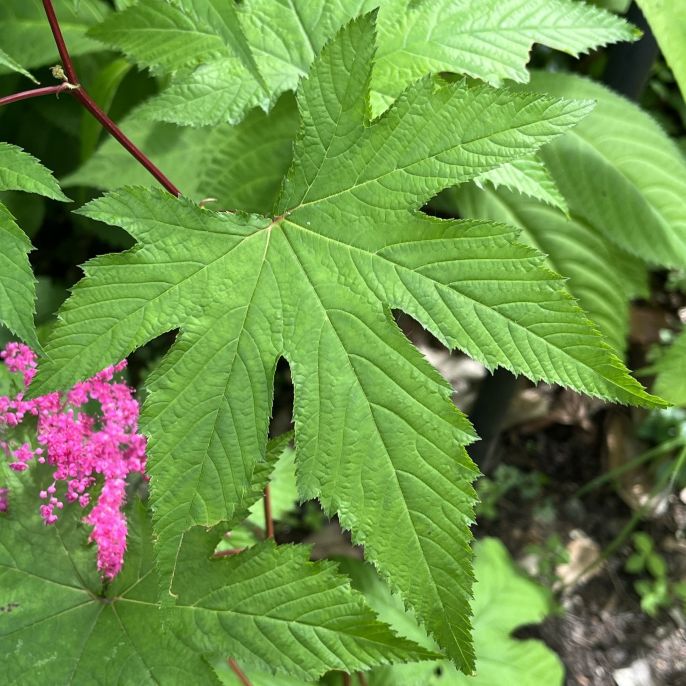
キョウガノコは同じように葉が掌状で、桃色の小花が密集する近縁種があります。「下野草」は関東以西の山野に自生。茎に小さな棘があり、葉に鋸歯がなく、1カ月ほど遅く開花します。「越路下野草」は日本海側に分布。托葉が大きく、茎を抱くように生え、花に毛がありません。
Japanese Meadowsweet
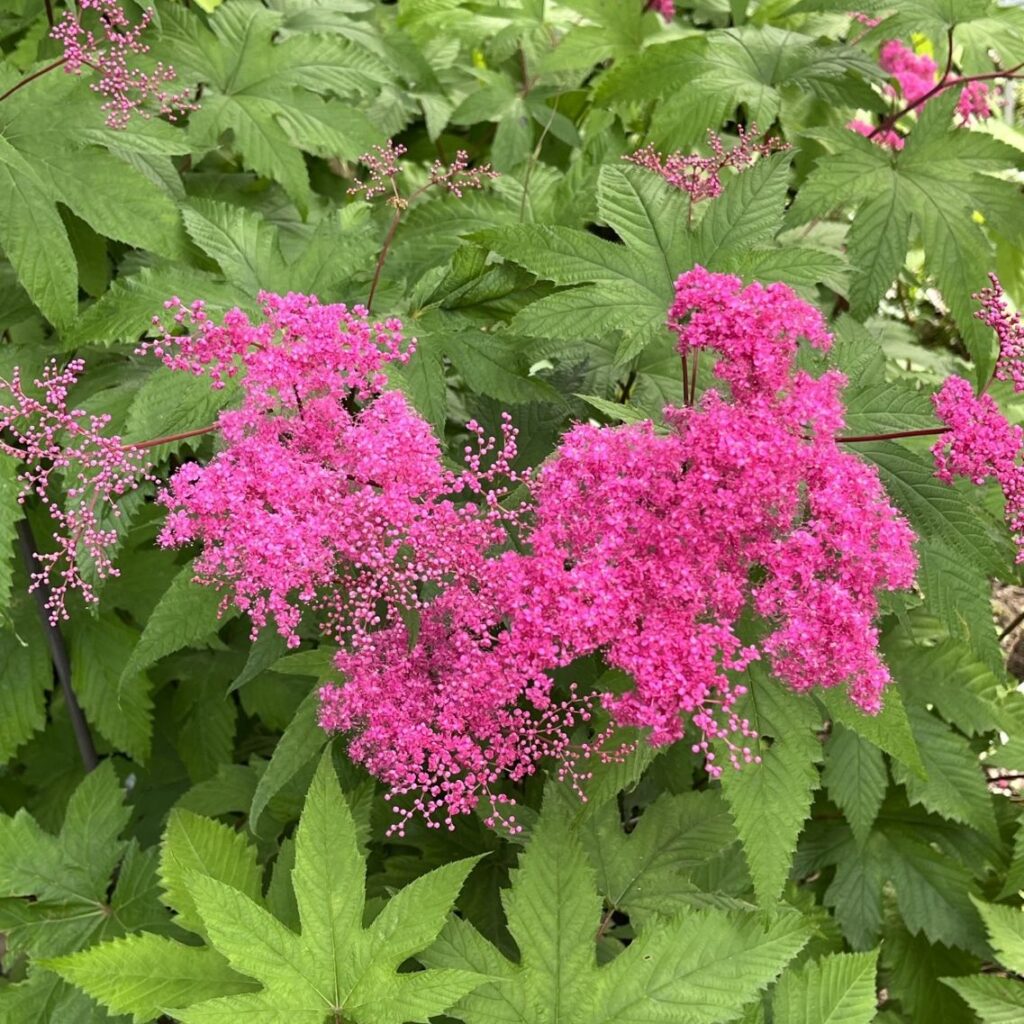
Japanese Meadowsweet is a perennial plant of the Rosaceae family. It is a horticultural hybrid of “Filipendula multijuga”, which grows wild in the Kanto to Kyushu areas of Honshu, and “Filipendula auriculata”, which grows wild in Yamagata to Toyama prefectures. It has been planted in gardens since ancient times and used as a tea flower. It has fresh, bright green palmate leaves and lovely bright red cymes. Its flower language is “secret love”.
The Japanese name for Japanese Meadowsweet means “traditional Japanese tie-dyeing technique”. That creates a distinctive pattern resembling the spots of a young deer. That’s because the way the flowers bloom, with their florets clustered together, evokes that pattern. The Latin genus name Filipendula means “hanging by a thread,” and the specific name purpurea means “purple.” They are derived from the shape of the rhizome.
The rhizome of Japanese meadowsweet is thick and beaded. The stem branches vigorously upwards. It is purple, thin, and ridged. The leaves are odd-pinnate compound and alternate. They are palmately divided into 5 to 7 lobes and have serrated edges. The flowers are pale pink buds and bright red florets clustered together. The florets have 4 to 5 petals and protruding stamens. After flowering, the achene stands upright.
There is a closely related species of Japanese meadowsweet that has similar palmate leaves and clusters of pink florets. “Filipendula multijuga” grows wild in the mountains and fields west of the Kanto region. It has small thorns on the stem, leaves without sawtooth, and blooms about one month later. “Filipendula auriculata” is distributed on the Japan Sea coast. It has large stipules that grow to embrace the stem, and flowers without hairs.

